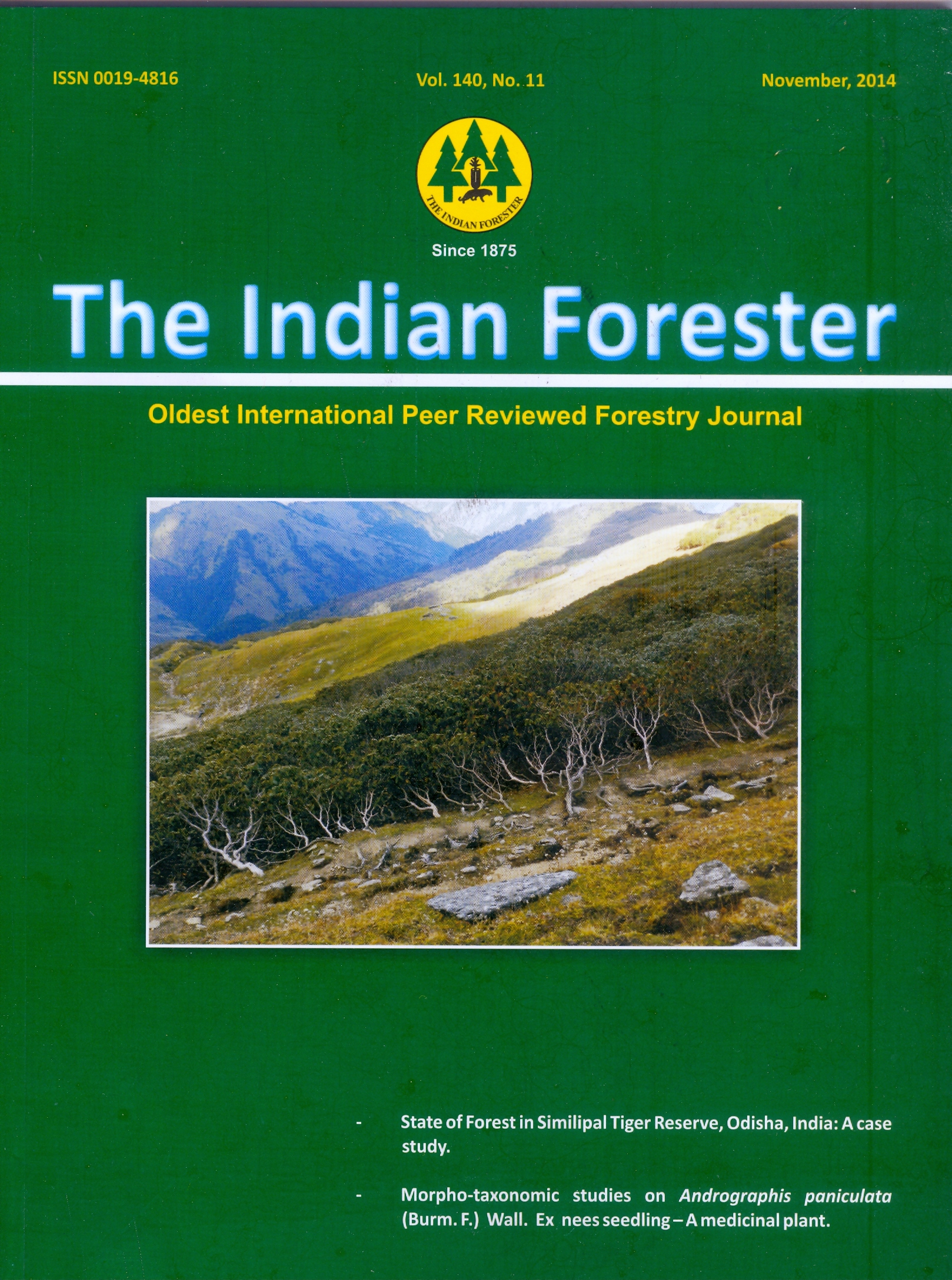State of Forest in Similipal Tiger Reserve, Odisha, India: A Case Study
DOI:
https://doi.org/10.36808/if/2014/v140i11/54436Keywords:
Dense Forest, Forest Cover, Forest Biomass, Carbon Stock, Open Forest, Similipal Tiger Reserve.Abstract
Similipal Tiger Resrve, Odisha, was designated as a Tiger Reserve in 1973. As of December, 2006, core area of the Reserve constituted 906.26 km2 and buffer area was 1304.49 km2. The forest cover of Similipal for the year 1997, 2003 and 2006 was assessed using the satellite data of IRS-1D, sensor LISS-III, spatial resolution 23.5m x 23.5m and spectral resolution 4 bands. The results of such assessment have been presented in this paper. Dense forest constitutes 87.81% area of Similipal forests, whereas open and degraded (scrub) forest constitute 5.65% and 3.24% respectively. Grassland, crucial for wild ruminants is only 0.04% and it is available in the core area. Barren rocky/stony waste constitutes 2% of Similipal forests. Water bodies, mostly in the form of streams flowing inside Similipal form 0.23%. Tree-clad area is 0.12%. Agricultural land and built-up land is 0.9%. Similipal witnessed decrease of 252.71 km2 dense forests in six years from 1997 to 2003 and increase of 347.87 km2 in three years from 2003 to 2006. There is increase of open forests of 343.82 km2 from 1997 to 2003 and decrease of 330.56 km2 from 2003 to 2006. Degraded forests have decreased by 34.56 km2 between 1997 and 2003 and 27.47 km2 between 2003 and 2006. Forest biomass carbon stock of Similipal has been estimated to be 16-31 million tonnes of carbon. The dense forest cover of Similipal has the high potential to mitigate CO2emission in the locality.Downloads
Download data is not yet available.
Downloads
Published
2014-11-01
How to Cite
Swain, D. (2014). State of Forest in Similipal Tiger Reserve, Odisha, India: A Case Study. Indian Forester, 140(11), 1049–1055. https://doi.org/10.36808/if/2014/v140i11/54436
Issue
Section
Articles
License
Unless otherwise stated, copyright or similar rights in all materials presented on the site, including graphical images, are owned by Indian Forester.





